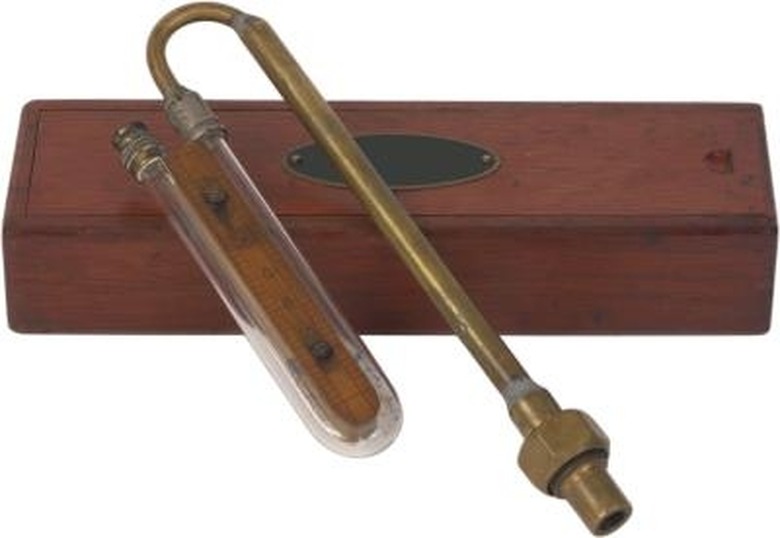What Is A Differential Manometer?
A differential manometer is a device that measures the difference in pressure between two places. Differential manometers can range from devices simple enough to be built at home to complex digital equipment.
Function
Function
Standard manometers are used to measure the pressure in a container by comparing it to normal atmospheric pressure. Differential manometers are also used to compare the pressure of two different containers. They reveal both which container has greater pressure and how large the difference between the two is.
Use
Use
Differential manometers have a wide range of uses in different disciplines. One example is that they can be used to measure the flow dynamics of a gas by comparing the pressure at different points in the pipe.
Construction
Construction
The simplest differential manometer is a U-shaped tube with both ends at the same height. A liquid, usually water or mercury, rests at the bottom of the tube.
Working
Working
If one end of the tube is in a place with higher air pressure, the pressure will push down the liquid on that side of the tube. By measuring the difference between the heights of liquid, it is possible to calculate the difference in pressure.
Calculation
Calculation
To calculate the difference in pressure, multiply the difference in height by the density of the gas and the acceleration due to gravity. The final units should be in pascals.
Cite This Article
MLA
Robinson, Abraham. "What Is A Differential Manometer?" sciencing.com, https://www.sciencing.com/differential-manometer-5964765/. 24 April 2017.
APA
Robinson, Abraham. (2017, April 24). What Is A Differential Manometer?. sciencing.com. Retrieved from https://www.sciencing.com/differential-manometer-5964765/
Chicago
Robinson, Abraham. What Is A Differential Manometer? last modified March 24, 2022. https://www.sciencing.com/differential-manometer-5964765/
